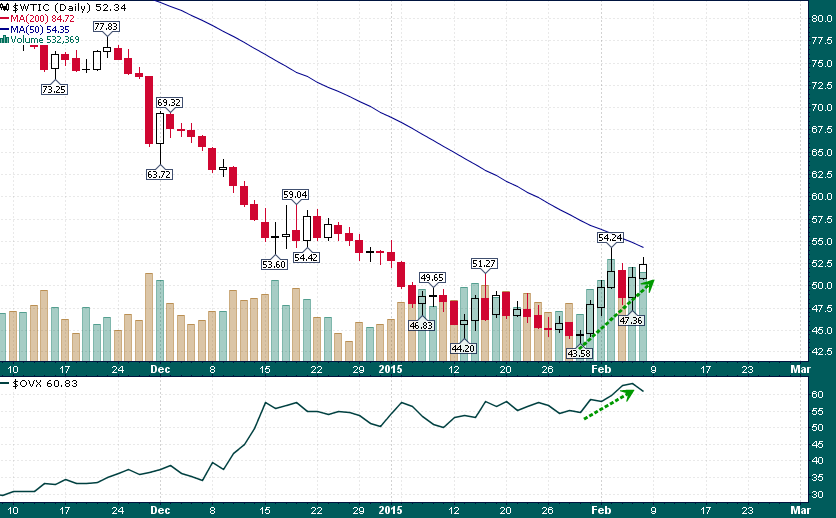An interesting phenomenon occurred in crude oil markets last week:
As WTI crude oil rose nearly 10% for the week, the OVX (CBOE Crude Oil Volatility Index) also rose and actually broke-out above an area of previous resistance near 60. This is unusual because options implied volatility (which is what the OVX is derived from) typically declines as the underlying market moves higher. The key word here is “typically”. Given the large increase in actual realized volatility which we witnessed last week, I am much less surprised with the behavior of the OVX.
Some market commentators have come out with the opinion that it is bearish for crude oil when OVX rises along with crude itself. One respected blogger, Dana Lyons, uses the following backtest with a sample size of 7 to take a skeptical view of the recent crude oil rally:
I am of a different opinion and drawing much information from this backtest can be quite misleading for a number of reasons:
- It’s a tiny sample size that is not statistically significant
- The period from which the sample is derived (2008-2015) has seen extraordinarily high levels of volatility (especially 2008 and 2011) so it is not a sufficiently representative sample of different market phases
- Crude oil has performed relatively poorly during the sample time frame so one would expect negative results from most backtests
- Any backtest which one performs in crude that involves 3 consecutive up days and a 10%+ rise in price will yield negative results over most time frames, therefore with a sample size of only 7 it is easy for one to make a spurious correlation with a rise in the OVX
From my vantage point a large rally accompanied by rising implied volatility is actually a BULLISH phenomenon. Here is my rationale:
- Rising options implied volatility (especially when vol is already at multi-year highs) is an indication of fear in the market and a sign that investors are willing to pay high premiums in order to hedge downside risk
- High implied volatility is also an indication of market sentiment, an OVX >60 is a sign that market participants are still plenty bearish on crude
- Big market declines rarely occur when participants are extremely bearish and well hedged, in fact, large declines typically occur when nobody is expecting them and hedges are either very light or non-existent
Simply put, the rise in OVX last week is NOT a bearish omen for crude oil – in fact, it’s quite bullish over the near term. I would begin to look at the short side on crude again if price rallied back above $60 and the OVX fell back below 40 in a sign that complacency is starting to reenter the market. However, with the OVX above 60 and bearish sentiment on crude at extreme levels it’s much more difficult to take a bearish view.


